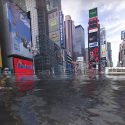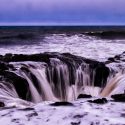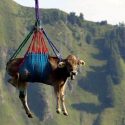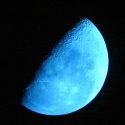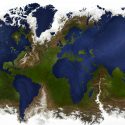This is the world 200 million years ago. No cell phones, electricity or even other humans.
Would you be able to survive in this new world? Could you get yourself a pet dinosaur?
Wait dinosaurs are here? Okay, maybe this won’t be so bad.
The world was pretty different during the late Triassic period. One of the most notable differences is this thing right here. This is Pangea, a supercontinent containing different parts of today’s world.
There’s Australia down South, North America in the North West and Eurasia in the East, all interconnected. It would take you a while, but in theory, you could walk from California to France.
But you won’t see the Hollywood Walk of Fame or see the Eiffel Tower as they don’t exist yet. What would you see?
The first thing you’d notice as you’re traveling across Pangea are all the dinosaurs running about. You won’t have to worry about dinosaurs such as the dilong, that weigh only 11 kg (25 pounds,) they won’t pose much of a threat.
But watch out for the Melanorosaurus who has a height of 12 meters (39 feet) and would find you to be a tasty snack. Scientists say the late Triassic period was the dawn of the first dinosaurs.
Dinosaurs of all sizes would be everywhere. You’d also see some other crazy creatures you’ve never seen before, and some that may remind you of animals you see today.
This species known as Drepanosaurus with its reptile-like skin and arched back might be one of the first versions of birds to ever exist. The Triassic period was an incredibly important 50 million years of evolution.
A time with not a lot of competition between species, since just prior this period, 70% of the Earth’s creatures were wiped out in a mass extinction event. Many of the animals at this time were able to thrive and grow without having to be constantly wary of other predators.
The further you travel inland into Pangea you’ll notice the massive weather changes. The outer edges of the supercontinent may be full of lush forests and green grass, but the further you go in, that begins to change.
Scientists suspect that much of Pangea was a dry, desert wasteland. That’s because the land mass was so large that the interior wouldn’t have received the cooling effects of the ocean.
Speaking of which, the ocean, known as Panthalassa surrounded all of Pangea and covered 70% of the Earth’s surface. This ocean was extremely deadly. It would easily produce superhurricanes and monsoons and due to its massive size, they could gain enought momentum to hit Pangea with potentially fatal weather.
If you somehow managed to survive several million years you’d find yourself in the Jurrasic time period. This is where dinosaurs truly thrived. The t-rex, brachiosaurus, and the stegosaurus can all be found here. Er, maybe having a dinosaur as a pet won’t be the best idea.
Subscribe to What-If on Youtube or follow the show on Facebook Watch.
Sources
- Ancient Earth. 2019. dinosaurpictures.org. Accessed February 10 2019.
- “Spending A Day On Earth 200 Million Years Ago”. 2019. Youtube. Accessed February 10 2019.
- “Pangaea”. 2019. en.wikipedia.org. Accessed February 10 2019.
- “The BGS Geological Timeline | Time | Discovering Geology | British Geological Survey (BGS)”. bgs.ac.uk. Accessed February 10 2019.
- “200 Million Years Ago, Half Of All Life On Earth Went Extint From A Methane Eruption”. 2011. ZME Science. Accessed February 10 2019.
- “Triassic Period Facts: Climate, Animals & Plants“. Bagley, Mary 2014. Live Science. Accessed February 10 2019.
- “Timeline Of The Evolutionary History Of Life”. 2019. en.wikipedia.org. Accessed February 10 2019.
- “Triassic Period Facts | Dinosaurs | Reptiles | Animals | Eden Channel”. eden.uktv.co.uk. Accessed February 10 2019.
- “19 Tiny Prehistoric Creatures You’ve Never Heard Of”. 2019. Thoughtco. Accessed February 10 2019.
- “200 Million Years Ago, Half The World Died From a Massive Methane Eruption” Newitz, Annalee, 2011. io9.gizmodo.com. Accessed February 10 2019.


